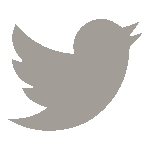Turkey has survived the rise and fall of some of civilisation's greatest empires, and it will also survive the contemporary threats of terrorism and political upheaval. With its many mystical wonders, architectural marvels and unique blend of East-meets-West culture, it's no wonder why this storied destination has Rosa Ocampo enchanted
When Mart Evers Travel and Tours invited me to join a group tour to Turkey in October 2017, I was not daunted by the political and terrorism concerns in the destination, and neither were the rest of the 37-member group. After all, we Filipinos grapple with our fair share of image issues when it comes to our country.
And so our motley crew of well-travelled bankers, lawyers, businessmen, architects, professors and managers – from the 20-something to the sprightly lady of 80 – embarked on a week-long discovery of Turkey.
Ground handler Glorious DMC fixed an itinerary, which included six out of the 17 UNESCO World Heritage Sites of natural and manmade wonders in the country, namely Troy, Ephesus, Hierapolis in Pamukkale, Goreme National Park and rock sites of Cappadocia, Pergamon near Izmir and the historic areas of Istanbul.

Turkey is literally where East meets West, one geographical foot in Asia and the other in Europe. Apart from its involvement during the Crusades, Anatolia was part of the Silk Road and we saw remnants of the caravanserais where merchants stayed. Istanbul, on the other hand, was the imperial capital of the Byzantine and Ottoman empires.
Turkey is as exotic as the names of its towns and cities. There was no trace of the political tension and terrorism as our luxury coach passed lovely panoramas of mountains, seas and bucolic scenery. The roads were wide, well-paved and traffic-free, a respite from our traffic-clogged urban thoroughfares. Even during rush hour, the streets of Istanbul compared favourably with its Asian counterparts.
Bordering Syria and Iraq, Turkey has taken in three million Syrian refugees and a million Iraqi refugees, which has taken a toll on its economy. Perhaps signs of this are beggars on the streets of Istanbul, a way more common sight now than before.
We visited several archaeological sites beginning with the ancient city of Troy that we know from Greek mythology. That morning it was bereft of tourists except for our group. Pergamon in Izmir has an ancient medical complex called Asklepion, the world’s first psychiatric hospital. As a majority of our group were Christians, we could relate to the ruins of Ephesus which was frequently mentioned in the New Testament and home to the apostles Paul and John. It has the world’s biggest amphitheatre which sits 25,000 and is still used for concerts and other events.

Picturesque Pamukkale, which means ‘cotton castle’, got its name from the terraces of white lime rocks and cliffs formed by hot mineral spring water that seeped through for thousands of years. Nearby is Hierapolis with its ruins of bathhouses, temples and the biggest necropolis or graveyard of the ancient world. Tourists here are mainly Chinese and other Asians.
Cappadocia, with its acre upon acre of surreal rock formations resulting from volcanic eruptions, is often chosen as the backdrop in many international films because of its unusual formations. It is also a favourite among Insta-happy Filipinos.
Early Christians built their houses and churches upon these rocks, including those in the underground city of Kaymakli to escape Roman persecution. Many of these cities are linked to other cities by underground tunnels.
The gung-ho elderly in the group, including the 80-year old lady, gamely joined the hot air balloon ride to see Cappadocia during sunrise. They also joined the jeep safari for a peek at the cave houses and churches.
We also passed by Konya in Ankara, a pilgrimage site for Sufis, with the tomb of Rumi in Mevlana Museum. Konya is also where the whirling dervishes originated.
Our historical and geographical immersion was punctuated by shopping sprees. Turkey is a real shoppers’ paradise. A number of Turkish designer brands are available in factory outlets at reduced prices. We also stopped by a huge carpet manufacturing shop with a dizzying array of high-quality carpets valued based on number of knots, instead of size. Other shops include those selling leather goods, handmade pottery, souvenir items, lamps and other artefacts not found elsewhere in the world.
Of course shopping in the city is incomplete without a visit to the Grand Bazaar in Istanbul. This is the biggest covered shopping place in the world, although it is getting smaller – from 3,000 shops when it first started centuries ago to the 1,000 today.
Still, the bazaar was impressive and for the shopaholics among us, a truly beguiling force. A family in this group even extended their stay by three more days so they could shop some more.
We visited several architectural wonders of Istanbul including the Blue Mosque, Topkapi Palace and of course the Haggia Sofia which was a Muslim mosque that became a Catholic cathedral, before becoming a museum for the public. It’s a transition that did not erase the past, much like Turkey’s transition into a modern republic that it is today.
Our day tour of Istanbul was capped by a late afternoon cruise along the Strait of Bosphorus, which connects Asia on the left to Europe on the right. The connection is through the world’s biggest suspension bridge built in 2016, and also the third bridge on the Bosphorus. The Bosphorus is lined with elegant buildings and mansions and palaces of the wealthy.
The sky’s colours changed as the sun set, burning a fierce orange until the darkness crept in, leaving the suspension bridge and the surrounding palaces awash with a myriad of lights. From light to dark and back to light again. What a dramatic sight to behold.
Our tour guide Nami Ardakoc, who is also a political science professor, predicted that Turkey’s tourism will pick up soon after two years of downtrend. I couldn’t help but agree.
One cannot put a good destination down. Turkey with its pedigreed history, culture, geography and natural attractions is meant to be discovered by tourists. As for me, it merits a repeat visit.




















